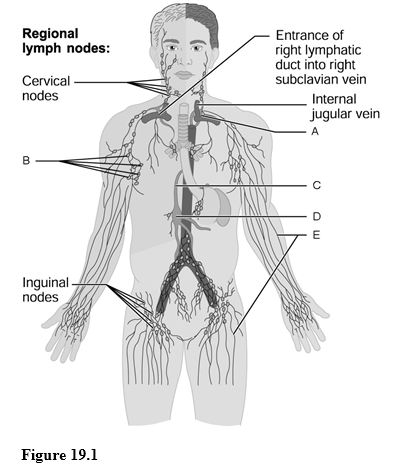Using Figure 19.1, match the following:

1) Axillary node(s).
2) Cisterna chyli.
3) Entrance of thoracic duct into subclavian vein.
4) Thoracic duct.
5) Lymphatic collecting vessels.
1) B
2) D
3) A
4) C
5) E
You might also like to view...
The mechanism of action of lipid-soluble hormones is generally via the stimulation or inhibition of specific DNA-dependent protein synthesis.
Answer the following statement true (T) or false (F)
Which connective tissue type provides insulation?
A) dense regular connective tissue B) fluid connective tissue C) adipose tissue D) dense irregular connective tissue E) areolar tissue
The muscles of the lower limb have a more limited range of motion than those of the upper limb.
Answer the following statement true (T) or false (F)
Which term refers to the ability of a local potential to prevent a neuron from sending a signal?
A. Decrimental B. Graded C. Excitatory D. Inhibitory